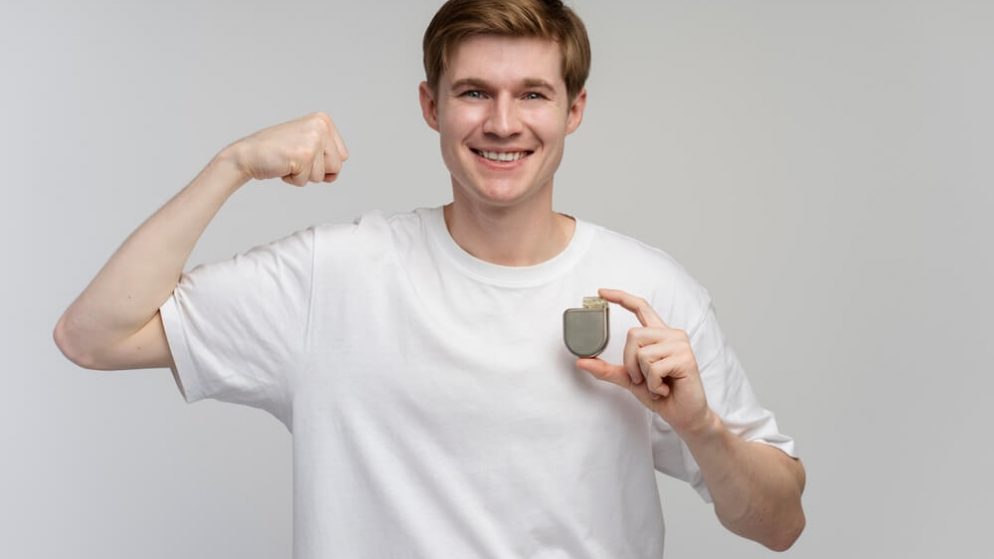



Get new exclusive access to healthcare business reports & breaking news




A fully independent clinical trial researchers thought might disprove a cardiac device made by Shockwave Medical, the company that Johnson & Johnson is buying for $13 billion, ended up providing some support for the device’s utility.
The product, called a coronary sinus reducer, is a small, hourglass shaped device that is placed in the coronary vein to redistribute blood in the heart.
This is good news for J&J, which has a patent contest brewing with big pharma giant Amgen, who wants to produce a biosimilar of J&J’s top-selling psoriasis drug, Stelara. Johnson & Johnson is known for acquiring biotech companies to get a certain drug or new medical device. For instance, in August 2020, J&J bought the-then autoimmune disease biotech Momenta Pharmaceuticals in a $6.5 billion blockbuster deal. The acquisition was largely seen as a move to access Momenta’s Nipocalimab, a late-stage experimental drug for hard-to-treat, rare autoimmune diseases like myasthenia gravis.
The data, presented Monday at the annual meeting of the American College of Cardiology and published in The Lancet, could bolster the case for the device, which is available in Europe and the U.K. but was previously rejected by the U.S. Food and Drug Administration.
The system, termed a coronary sinus reducer, is meant to lower upper body discomfort by forcing blood backward by means of the heart’s veins. The most important intention of the small demo was to use magnetic resonance imaging to see if this took place.
Shockwave Medical, a pioneer in the development and commercialization of transformational technologies for the treatment of cardiovascular disease, announced April 8th that investigators presented six-month data from the full population of the REDUCER-I study, alongside interim long-term follow-up results to three years. These findings confirm the positive, ‘real-world’ outcomes of Shockwave Reducer, a novel technology for the treatment of refractory angina. Results were presented earlier today at the 73rd Annual Scientific Sessions of the American College of Cardiology in Atlanta, GA.
REDUCER-I is a post-market, multi-center, observational study designed to collect long-term outcomes on Shockwave Reducer in a large, ‘real-world’ population of 400 patients. The lead enrollers of the study were Drs. Stefan Verheye1, ZNA Middelheim Hospital, Antwerp, Belgium, Tim van de Hoef, University Medical Center Utrecht, Utrecht, Netherlands, and Ranil de Silva, Royal Brompton and Harefield Hospitals, London, United Kingdom.
The primary effectiveness endpoint for the study was the percentage of patients experiencing improvement in their symptoms of angina defined as a reduction in Canadian Cardiovascular Society (CCS) grade at six months compared with baseline. The primary safety endpoints were the rate of device- and/or procedure-related periprocedural serious adverse events (SAEs) and major adverse cardiac events (MACE) up to 30 days post implant.
Six-month results demonstrated an improvement in ≥1 CCS class in 70% of patients, and ≥2 CCS classes in 24% of patients. The proportion of patients with CCS class III/IV declined from 72% at baseline to 18% at six months, with a mean change in CCS class of -0.9 ± 0.8 (p<0.0001).
Reduction in symptoms of angina was consistent at longer-term follow-up, with CCS class III/IV symptoms experienced by only 15% of patients at two years and 11% at three years (p<0.0001). Use of Shockwave Reducer also demonstrated a very favorable safety profile, with SAE and MACE rates uniformly low at 1.1% and 1.6%, respectively.
“Results from the REDUCER-I study continue to demonstrate the safety and effectiveness of Shockwave Coronary Sinus Reducer as a novel therapy for refractory angina,” said Dr. Verheye. “We observed consistent reduction in symptoms of refractory angina and improvements in quality of life, results which align with those from the COSIRA study, previously published in The New England Journal of Medicine, in a challenging patient cohort characterized by high rates of cardiovascular risk factors and coexisting comorbidities for whom there have historically been no other treatment options.”
COSIRA-II, a US IDE double-blind randomized sham-controlled clinical trial, is currently enrolling patients to evaluate further the safety and effectiveness of Shockwave Reducer for the treatment of patients with refractory angina and no conventional revascularization options. Results from COSIRA-II are intended to support the regulatory filing for US FDA approval of Shockwave Reducer. Shockwave Reducer is an investigational device, limited by U.S. law to investigational use.
In a separate late-breaking clinical trial session at ACC, Michael Foley, MD, National Heart and Lung Institute, Imperial College, London, UK, presented data from the ORBITA-COSMIC trial (Principal Investigator Dr. Rasha Al-Lamee, MD PhD), a randomized, placebo-controlled, double-blind, multicenter trial investigating the efficacy of Shockwave Coronary Sinus Reducer. The study confirmed symptomatic relief from angina over time in patients that had received Reducer. Although the trial missed the primary imaging endpoint of myocardial blood flow assessed by magnetic resonance imaging, there was evidence of redistribution of blood flow to the subendocardial ischemic regions, supporting the putative mechanism of action of Shockwave Reducer. ORBITA-COSMIC provides additional evidence for the use of Reducer as an additional therapeutic option for patients with refractory angina, documented myocardial ischemia and no option for conventional revascularization.
Shockwave Medical is a leader in the development and commercialization of innovative products that are transforming the treatment of cardiovascular disease. Its first-of-its-kind Intravascular Lithotripsy (IVL) technology has transformed the treatment of atherosclerotic cardiovascular disease by safely using sonic pressure waves to disrupt challenging calcified plaque, resulting in significantly improved patient outcomes. Shockwave Medical has also recently acquired Reducer, which is under clinical investigation in the United States and Canada and is CE Marked in the European Union and the United Kingdom. By redistributing blood flow within the heart, Reducer is designed to provide relief to the millions of patients worldwide suffering from refractory angina.
Shockwave Reducer is CE-marked in the European Union for the treatment of refractory angina, a painful and debilitating condition that occurs when the coronary arteries deliver an inadequate supply of blood to the heart muscle, despite treatment with standard revascularization or cardiac drug therapies. It affects millions of patients worldwide, who typically lead severely restricted lives as a result of their disabling symptoms, and its incidence is growing. Reducer has been shown to provide relief from symptoms of angina in patients lacking conventional revascularization options. Placement of Reducer is performed using a minimally invasive transvenous procedure. While Reducer is not approved for commercial use in the United States, the FDA granted Breakthrough Device designation to Reducer in October 2018, and it is being studied in the COSIRA-II clinical trial.